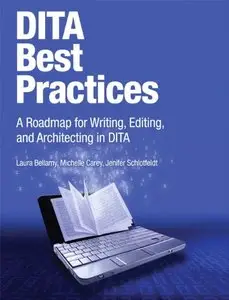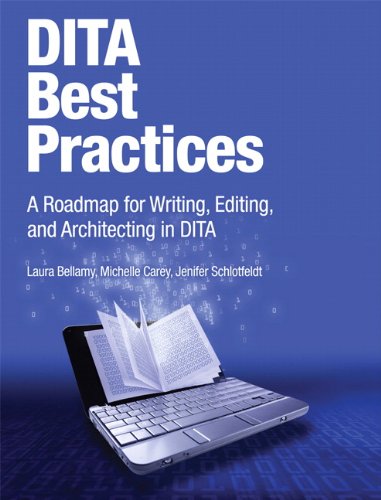DITA Best Practices: A Roadmap for Writing, Editing, and Architecting in DITA By Laura Bellamy, Michelle Carey, Jenifer Schlotfeldt
English | 2011 | 288 Pages | ISBN: 0132480522 | PDF | 14 MB
English | 2011 | 288 Pages | ISBN: 0132480522 | PDF | 14 MB
The Start-to-Finish, Best-Practice Guide to Implementing and Using DITA
Darwin Information Typing Architecture (DITA) is today’s most powerful toolbox for constructing information. By implementing DITA, organizations can gain more value from their technical documentation than ever before. Now, three DITA pioneers offer the first complete roadmap for successful DITA adoption, implementation, and usage.
Drawing on years of experience helping large organizations adopt DITA, the authors answer crucial questions the “official” DITA documents ignore, including: Where do you start? What should you know up front? What are the pitfalls in implementing DITA? How can you avoid those pitfalls?
The authors begin with topic-based writing, presenting proven best practices for developing effective topics and short descriptions. Next, they address content architecture, including how best to set up and implement DITA maps, linking strategies, metadata, conditional processing, and content reuse. Finally, they offer “in the trenches” solutions for ensuring quality implementations, including guidance on content conversion.
Coverage includes:
• Knowing how and when to use each DITA element–and when not to
• Writing “minimalist,” task-oriented information that quickly meets users’ needs
• Creating effective task, concept, and reference topics for any product, technology, or service
• Writing effective short descriptions that work well in all contexts
• Structuring DITA maps to bind topics together and provide superior navigation
• Using links to create information webs that improve retrievability and navigation
• Gaining benefits from metadata without getting lost in complexity
• Using conditional processing to eliminate redundancy and rework
• Systematically promoting reuse to improve quality and reduce costs
• Planning, resourcing, and executing effective content conversion
• Improving quality by editing DITA content and XML markup
If you’re a writer, editor, information architect, manager, or consultant who evaluates, deploys, or uses DITA, this book will guide you all the way to success.
Thanks if you use uploaded link



